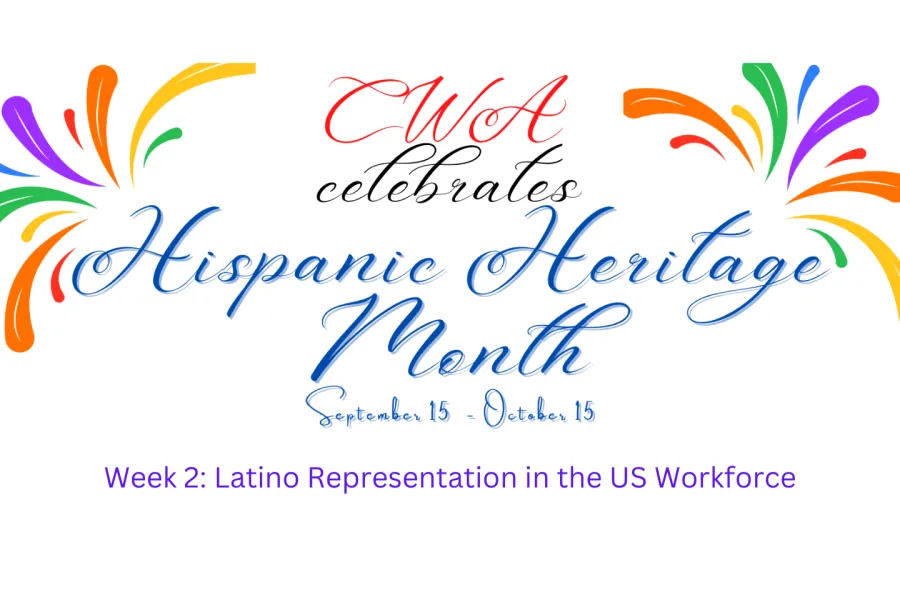Hispanic Heritage Month - Week 2

Sept 15 - Oct 16 is Hispanic Heritage Month, and each week this month the CWA Human Rights & Equity Committee has a new newsletter lifting up Latino issues. Here's week 2 - Latino Representation in the U.S. Workforce.
Currently in the United States, over 60 million Latin people make up for 18.7% of the population being the 2nd largest ethnic group in the country. By 2030 Hispanics are projected to account for 78% of net new workers. The U.S. labor force growth rate has slowed over the past decades and what growth has occurred is largely due to the increasing number of Hispanic workers.
The number of Latin women in the labor force increased to over 12 million accounting for over 16% of the female workforce. Despite their increase in the overall workforce, Latina women suffer not only from the racial and ethnic pay gap but also from the gender pay gap. Although the number of Hispanic working men and women are increasing, the unionization rate of those workers remain at a low 9.8%.
The labor movement has historically enabled workers to organize for positive change in the workplace by compelling employers to abide by the law and strive to improve job quality. Unions are important because they help set the standards for education, skill levels, wages, working conditions, and quality of life for workers. Coverage by a collective bargaining agreement has proven to boost workers wages and benefits and are generally superior to what nonunion workers receive. Unfortunately, Latinos are the least likely to belong to unions. Increasing opportunities for Hispanic workers to join unions is one of several actions critical to elevating job quality and improving the quality of life for all. For Latin Women, unions help alleviate the pay gap by helping latinas access non-discriminatory, collectively bargained contracts.
Click here for the full newsletter CWA Celebrates Hispanic Heritage Month, Week 2


